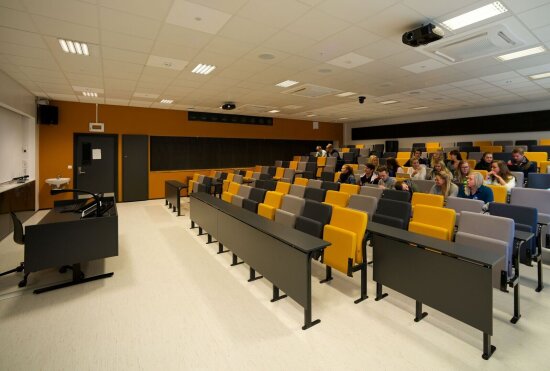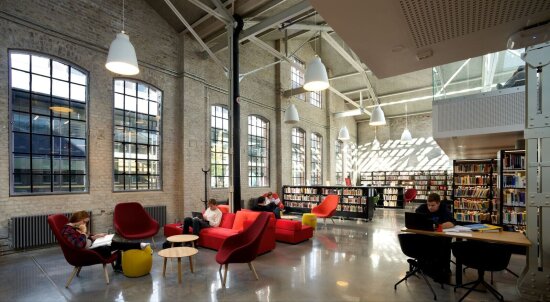Jury's verdict
The college stands as a well-executed pioneering project within the design of an educational establishment. A conscious strategy for universal design was employed and this is continually followed-up. The different rooms and halls are both exciting and varied through the way in which volumes, materials and constructions have been used. Common areas are both visually stimulating and functionally inviting.
The jury considers the acoustics and soundscapes to be particularly good, for example, in the shared canteen, library and social spaces. Orderly and limited use of emergency pathway lighting enables the most important directions on the premises to be seen without being intrusive on a daily basis. Some elements, traces and constructions from previous eras have been maintained and function well in combination with the new architectural design. Whilst thresholds have been reduced, good lighting is everywhere. Even books are illuminated in the library. The jury endorses the fact that the universal design of the building is so well integrated and adapted to cognitive needs that it invites people to actively use the college – including outside of normal opening hours. The spaces no longer resemble an institution, but a sense of calm prevails, even when the common areas are full of students. Since there is a good selection of furniture and high quality fixtures and fittings, the students can sit, walk, lie down, mingle or work as desired.
The jury finds it innovative when a university college takes universal design and uses it to satisfy different social preferences and abilities. Student representatives have positive comments about the building, and the college has already noticed a marked increase in the amount of time students spend at the college. The jury observed the presence of colour-coded information and direction boards in the reception, however even more prominence is desirable.

Photo: Pål Hoff

Photo: Pål Hoff.

Photo: Pål Hoff
